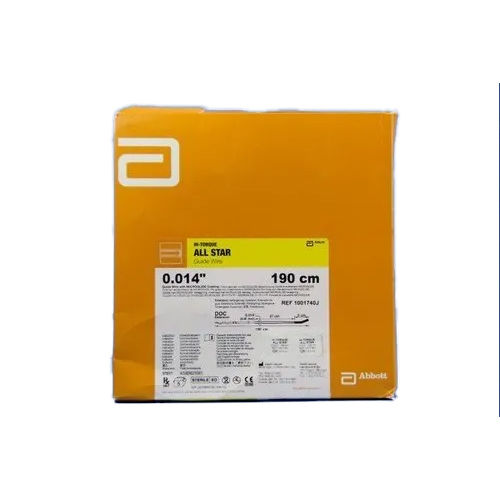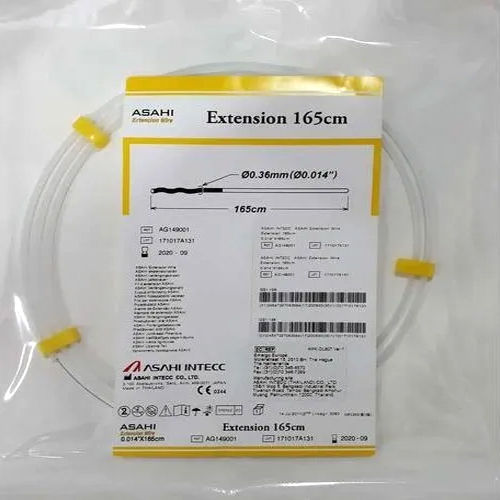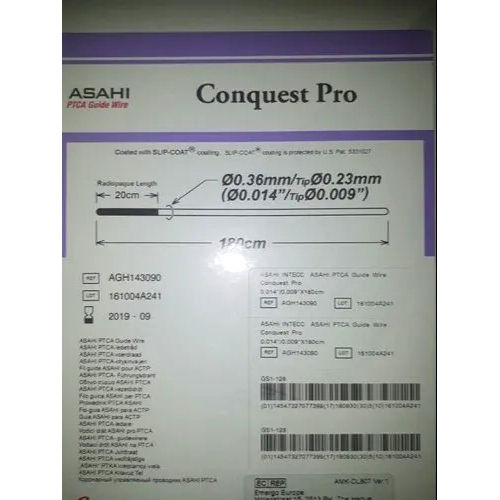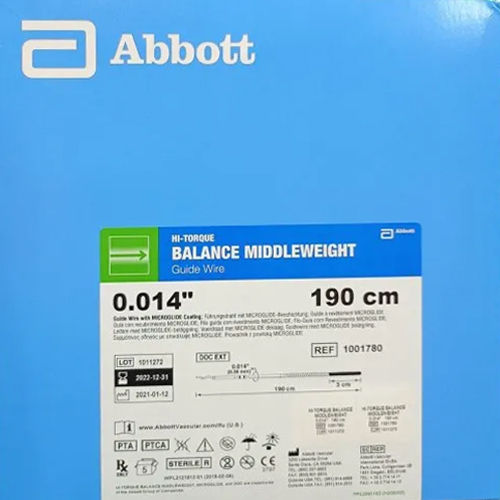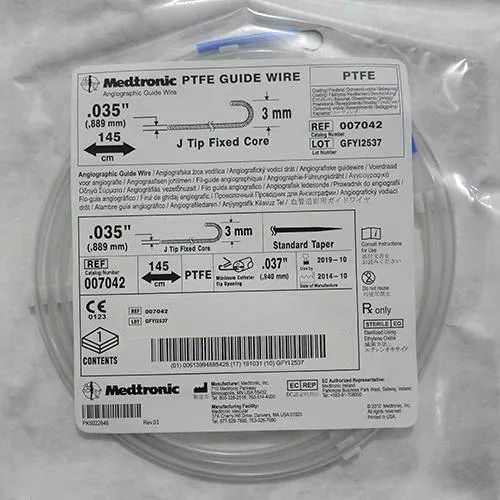Abbott All Star Guide Wire
Product Details:
Abbott All Star Guide Wire Price And Quantity
- 50 Piece
- 2500 INR/Piece
Abbott All Star Guide Wire Trade Information
- 10000 Piece Per Week
- 4 Days
Product Description
Abbott All Star Guide Wire guides catheters, stents and balloons to pass through specific body parts to perform cardiovascular, catheterization and angiography procedures. Provided guide wire helps to maintain accurate position of stents, balloons and catheters for treating specific health conditions. Kink resistant polymer made body of Abbott All Star Guide Wire features radiopaque polymer coating. Its low profile design enables it to navigate through required area of body. Its flexible distal tip design minimizes pain during its insertion into the tissues. It is accessible in different lengths and sizes to meet specific application requirement of interventional cardiology procedure.
Product details
|
Core Material |
Stainless Steel |
|
Polymer cover |
Intermediate polymer sleeve |
|
Radiopaque Length |
3 cm |
|
Tip Load |
0.8g |
|
Tip Style |
Core to tip |
|
Length |
190 cm |
|
Brand |
Abbott |
|
Guide Wire |
0.014" |
|
Material |
PTCA |
|
Disposables |
Yes |
|
Coating |
Hydrophobic |
|
Automation Grade |
Manual |
Frequently Asked Questions
Q: Describe a guiding wire?
A: A guide wire is a small, flexible wire that is employed in medical operations to help catheters and other medical devices find their way through blood vessels and other bodily structures.
Q: What material do guide wires contain?
A: Stainless steel, nitinol (a nickel-titanium alloy), or other substances with great flexibility and strength are frequently used to make guide wires.
Q: What purpose do guide wires serve?
A: A number of medical procedures, including angioplasty, stenting, and catheterization, all make use of guide wires. They aid medical professionals in navigating blood vessels, removing obstructions, positioning catheters, and directing the insertion of other medical equipment.
Q: How does a guide wire function?
A: Because of its flexibility, the guide wire can move through the blood vessel's twists and turns after being placed into one or another bodily part. Doctors can gently advance the guide wire to direct catheters and other medical tools along its course.
Q: Guide wires: can they be reused?
A: Since guide wires are often single-use tools, they shouldn't be reused. This lessens the chance of contamination or infection and maintains their sterility.

